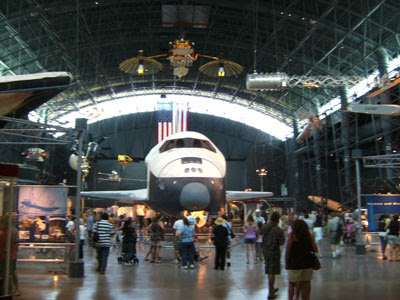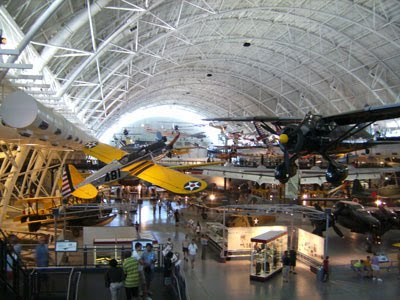
Steven F. Udvar-Hazy Center of the National Air and Space Museum
The Smithsonian has such a large collection of airplanes, aircraft, and related flying things, they cannot display all of them at the National Air and Space Museum on the Mall. A few years ago they built a place near Washington Dulles airport. While there is plenty of space to display many items, a visit requires a special drive to get there.
The centerpiece of the collection is the Enola Gay. It dominates the pictures above and below.

If you do not know the story of this B-29 Superfortress, the Unnamed Geniuses some words and more pictures of this aircraft.

The Hurricane gained fame in the Battle of Britain. The aircraft model on display here did not enter service until later in the war.

This World War II item is a rotary-wing kite. A U-Boat could deploy one of these to look for ships to sink. While it increased the visual range of U-Boats and made it easier to find ships to sink, it also made it easier for Allied forces to spot and intercept the U-Boats.

A Concorde is in the middle of all the planes above.

Here is an SR-71. Even though it was built in the 1960s, it still holds the record as the fastest air breathing manned aircraft.
James S. McDonnell Space Hangar

A subdivision of the Udvar-Hazy Center, this houses space related items. The main attraction here is the Enterprise space shuttle. It was the first space shuttle and used for approach and landing tests. After the testing was complete, it was determined it would be easier to build a new shuttle instead of upgrading and adding all the elements necessary to make the Enterprise space worthy. It was followed by the Columbia, Challenger, Discovery, Atlantis, and Endeavour.
 The Apollo 11 Columbia command module is at the Smithsonian on the National Mall. However, the flotation bags and collar attached to this other module are the actual ones used when the Apollo 11 command module splashed down. In the background on the right is the Mobile Quarantine Facility where Armstrong, Aldrin, and Collins were kept in until they were deemed free of contamination from the Moon.
The Apollo 11 Columbia command module is at the Smithsonian on the National Mall. However, the flotation bags and collar attached to this other module are the actual ones used when the Apollo 11 command module splashed down. In the background on the right is the Mobile Quarantine Facility where Armstrong, Aldrin, and Collins were kept in until they were deemed free of contamination from the Moon.
The aircraft can be observed from the ground, a second level, or an even higher observation level. It is as if you are in the air watching them fly.

I learned more looking through the National Air and Space Museum's website and the Unnamed Geniuses of Wikipedia than I did at the museum itself. I also looked at the fine pictures online to get the exact names of some of the aircraft I photographed.

I had no idea about this place! I may have to add it to my to-do list for the coming year.
ReplyDelete